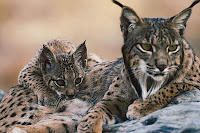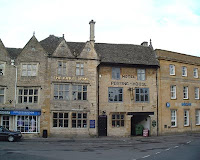Extinctions in the UK - the implications for historical romance books
 Every so often I'm reading a book and a wolf stalks across the historical landscape, or a red kite swoops down in the streets of London and carries off a kitten. Fascinating background colour, but it did get me wondering about extinction dates for various species in the UK because nothing will pull me out of a book faster than a beaver splashing around in a Regency era river.
Every so often I'm reading a book and a wolf stalks across the historical landscape, or a red kite swoops down in the streets of London and carries off a kitten. Fascinating background colour, but it did get me wondering about extinction dates for various species in the UK because nothing will pull me out of a book faster than a beaver splashing around in a Regency era river.So here's a round up of a few extinction dates for species in Britain, although some of these are in dispute.
The Brown Bear - Circa 1000 AD
Bears are thought to have died out in Britain shortly before the medieval period due to heavy deforestation and hunting by humans. Bones and skulls have been found scattered in many parts of the Scottish Highlands while bears are often depicted on Pictish stones. This is pretty amazing to me. Despite having seen bears in the French Pyrenees I just can't get my head around the thought that shortly before the Norman Conquest you could have been wandering around a forest somewhere in the UK and bump into a bear.
The Lynx - Circa 400AD
As recently as 2005 it was believed that the lynx had died out in the UK about 4000 BC when the climate turned cooler and wetter. Then animal bones were discovered in a cave in Yorkshire that were carbon dated to about 400 - 500 AD. Just as I love to think that the Scottish Wild Cat still prowls the glens, so the thought of a lynx adds a perfect touch of mystery to a book set in the Dark Ages.
I love Scotland and sometimes when I'm standing in the forest listening to the silence I imagine what it would be like to hear the night split by a wolf's unearthly howl. The wolf was exterminated in Britain after centuries of persecution. The last wolves were in the Scottish Highlands and the last one was reputed killed in 1740. I think it would be pretty cool to feature a wolf in a book set in the Highlands in the 18th century.
As someone who has walked with wolves at the Wolf Trust, I admit to a huge admiration for these fabulous animals. The one licking my face in the photograph was 6 months old and a big cub.
The Wild Boar – Circa 1300AD
The extinction of the Wild Boar in the UK is complicated by the fact that it was re-introduced several times, notably in the 17th century. The re-introductions were not successful as many people saw the boar as a threat to agriculture and hunted it. Wild boar farming in England began in the 1970s and 1980s and since then populations of escapees have established themselves in the wild. On the basis of this evidence I think it would be quite credible to have a wild boar featuring in a Regency-set book!
For many years I believed that beavers were still around in the early 19th century because of all the curly-brimmed beaver hats that featured in Regency romances. In fact the beaver was hunted to extinction many years before, for its fur and the pain-relieving properties of its anal gland secretions. The beaver hats of the Regency were made from imported American beaver fur.
St Kilda House Mouse Circa 1930
With all the Regency historicals that are being located in unusual setting these days it's always possible that someone might think to set a book on the island of St Kilda, in which case they need to be reassured that the St Kilda house mouse was live and well until about 1930. This was the date on which the final settlers left St Kilda. It's reasonable to imagine that some of the mice survived for a while after this but the departure of the human population led eventually to the end of the mouse as well.
Red Kite
The Red Kite was never completely eradicated in the UK. Whilst you wouldn't see many kites in a city these days a remnant of the population survived in Wales and it was recently re-introduced into the Chilterns and has spread very successfully across parts of the south of the UK. Indeed it was reported in 2006 that a Red Kite had been seen over London after an absence of 150 years.
a city these days a remnant of the population survived in Wales and it was recently re-introduced into the Chilterns and has spread very successfully across parts of the south of the UK. Indeed it was reported in 2006 that a Red Kite had been seen over London after an absence of 150 years.
 a city these days a remnant of the population survived in Wales and it was recently re-introduced into the Chilterns and has spread very successfully across parts of the south of the UK. Indeed it was reported in 2006 that a Red Kite had been seen over London after an absence of 150 years.
a city these days a remnant of the population survived in Wales and it was recently re-introduced into the Chilterns and has spread very successfully across parts of the south of the UK. Indeed it was reported in 2006 that a Red Kite had been seen over London after an absence of 150 years. The streets of Shakespeare's capital were full of red kites. He referred to it as "The city of kites and crows." The birds were scavengers, never short of a meal at a time when people threw their rubbish in the street. They also stole washing off lines for their nests. But gradually improving public hygiene and waste-disposal robbed the red kite of its niche in the London ecosystem, and by the end of the 18th century it was extinct as a breeding bird. The last sighting on the streets of the capital was in 1859.





Comments
I gave her your blog address as well.
Beth, I've only heard wolves howling in captivity in Sweden. I imagine hearing them in the wild is an even more eerie experience.
I found walking with wolves fascinating. The adults were quite frightening because they had that detachment that you see in true predators, in the eyes of big cats, for example. The cubs, although huge in physical size, reminded me of puppies and were very playful. Apparently you can mingle with them until they are about 8 months old but after that it becomes dangerous. And of course there were a lot of staff present when we met the cubs and they kept an eye on everything to maintain very strict safety standards. Not everyone wanted to go into the enclosure though!
I've been a huge lover of wolves since I was a child, and lament how they've been hunted so mercilessly when there is no real proof that they've ever attacked humans. (They have wonderful "family" dynamics and the image of cold-blooded killer is reall unfortunate. I'd love to see you feature a friendly wolf in a Scottish romance!
The other info was fascinating too. I love learning facts like these!
Wow, what an experience. And what a beautiful animal! Looks so much like my 3-year-old German Shepherd, Drake. After WWI and before 1977, GSDs were known as Alsatian Wolf Dogs.
Nina, I didn't know about the Alsatian Wolf Dog. I wonder if they changed the name because of the negative connotations around the word wolf?
One of the saddest endangered species is the Polar Bear. Due to Global Warming, they are simply running out of "land". When wild animals lose their habitat, they are forced to seek other environments. Many times they have no choice but to edge their way into civilization. Unfortunately, the mix of wild animals and humans many times ends in tragedy.
Close. The name was changed due to negative connotations around the word German. The war and all that, you know.
Virginia, I share your fears for the polar bear. I find it tragic that their loss of habitat is causing such problems. They are the most magnificent creatures. I have some polar bear pictures that we took on our trip to the Arctic. Perhaps I should post them up with the wolves and a sort of eco-blog theme.